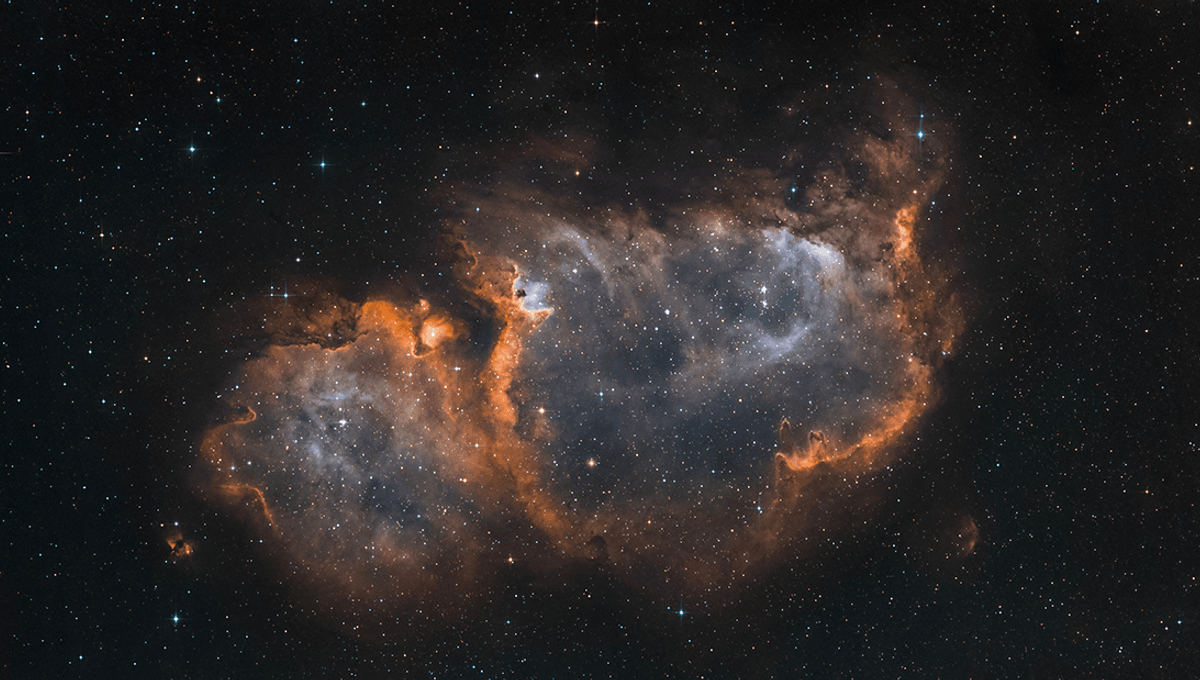
A new dark matter detector underneath a mountain in Jeongseon, South Korea, is about to be turned on. The team is attempting to rule out – or perhaps reproduce – puzzling results from a previous detector in Italy.
As far as astronomers studying the observable universe can tell, only around 5 percent of it is made up of matter. The rest, or the overwhelming majority of it, is made up of dark matter (around 27 percent) and dark energy (around 68 percent).
Dark matter is invisible matter that doesn’t emit its own light and only interacts with normal matter through gravity, which we can see evidence for in galaxies and galaxy clusters. But given that there appears to be five times as much of it as regular matter, scientists are of course on the hunt for direct evidence of its existence.
One approach to finding it, maybe counterintuitively as dark matter explains what we see in the stars and galaxies, is to head underground.
“On Earth,” Hugh Lippincott, Associate Professor of Physics at the University of California, Santa Barbara, explained in a piece for The Conversation, “we are constantly surrounded by low, nondangerous levels of radioactivity coming from trace elements – mainly uranium and thorium – in the environment, as well as cosmic rays from space.”
“The goal in hunting for dark matter is to build as sensitive a detector as possible, so it can see the dark matter, and to put it in as quiet a place as possible, so the dark matter signal can be seen over the background radioactivity.”
There are several underground facilities around the world where physicists look for signs of Weakly Interacting Massive Particles (WIMPs), among other things, such as measuring the impact of neutrinos. The idea is that the WIMPs must be passing through Earth all the time as it moves through space, so to detect them we simply need detectors sensitive enough to capture those weak interactions.
So far, essentially, no luck. But in 1997, one team in Italy – the DAMA/LIBRA experiment at the Gran Sasso National Laboratory – reported puzzling results. Their detector uses sodium-iodide crystals, which produce tiny flashes of light when a subatomic particle interacts within a nucleus inside these crystals. The team reported flashes of light, signs that they had been hit by subatomic particles. This is to be expected, with some background events mentioned above making their way to detectors.
However, the number of events varied throughout the year, which is what you would expect if some of the events were caused by dark matter. This is because Earth moves through the Milky Way‘s dark matter halo more quickly during certain parts of its orbit, increasing the number of detections you would expect. As it moves more slowly through the halo, you’d expect detections to be lower too.
The results were controversial, particularly as other teams have attempted and failed to replicate the results. But the team continued to see these detections even as they upped their instruments’ sensitivity. Muddying the waters still, as the sensitivity of the detector increased, it should have been able to detect lower energy collisions. These would peak at different times of the year, but that wasn’t seen in the data.
Now, a team in South Korea is attempting to replicate the DAMA/LIBRA experiment at a new facility dubbed Yemilab. The team’s previous experiment – COSINE-100 – was unable to replicate the results of the DAMA/LIBRA, despite using a similar setup using the same sodium-iodide crystals.
“The initial results carve out a fair portion of the possible dark matter search region drawn by the DAMA signal,” Hyun Su Lee, co-spokesperson for COSINE-100 said in a 2016 statement. “In other words, there is little room left for this claim to be from the dark matter interaction unless the dark matter model is significantly modified.”
The new experiment – dubbed COSINE-200 – uses the same setup but with enhanced sensitivity and more “radiopure” sodium-iodide crystals. Overall, the project – which should be running from August – is also better shielded than the DAMA/LIBRA experiment, hopefully diminishing any background interference that could have taken place in previous experiments.
Hopefully, the data collected will tell us whether the previously claimed detection was down to error, other sources (always a possibility, just ask the team who thought they saw faster than light neutrinos), or something truly weird.
Source Link: South Korean Lab To Hunt For Dark Matter After Puzzling Italian Results